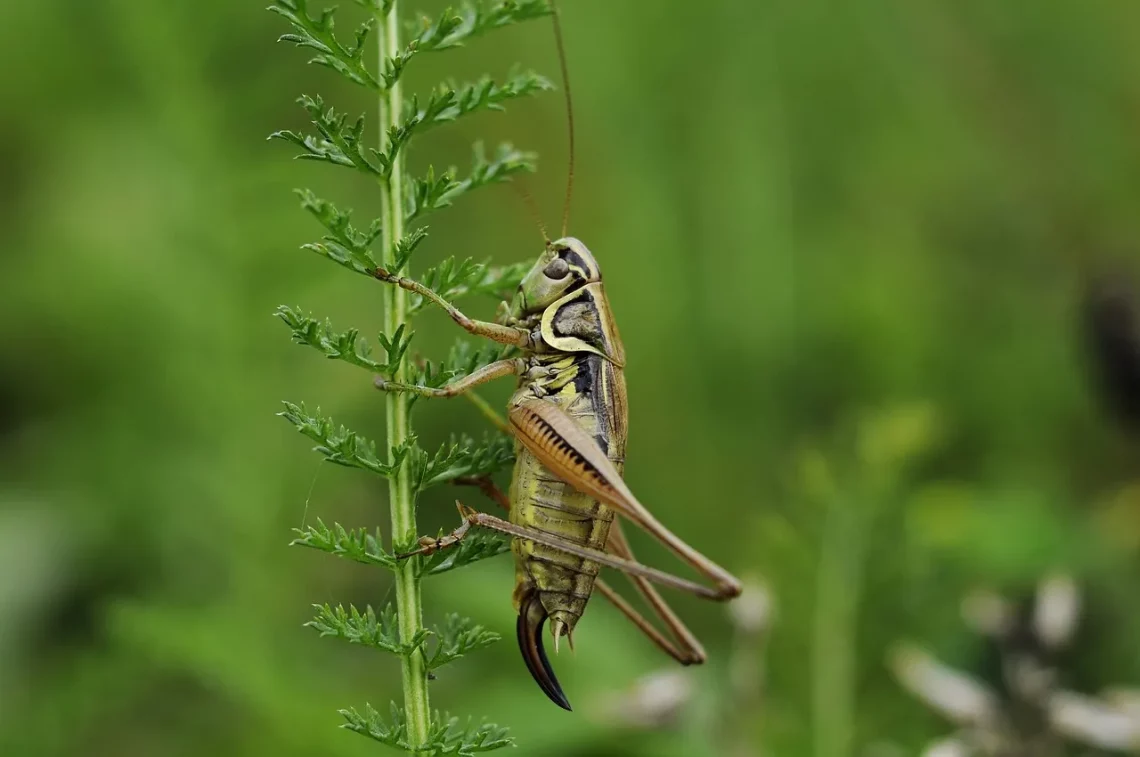
Exploring Different Breeds of Crickets and Their Unique Traits
Crickets are often overlooked in the grand tapestry of the animal kingdom, yet they play a crucial role in various ecosystems. With their distinctive sounds and varied appearances, crickets have captured the curiosity of scholars, naturalists, and enthusiasts alike. These insects belong to the family Gryllidae, and their diversity is as fascinating as it is extensive. Crickets are not just mere chirpers; they are a vital part of the food web, serving as prey for birds, reptiles, and mammals. Their unique behaviors, habitats, and adaptations showcase the incredible complexity of life.
The world of crickets is filled with different species, each exhibiting unique traits that help them thrive in their respective environments. From the lush grasslands to the arid deserts, crickets have adapted in remarkable ways. They are not only important for ecological balance but are also gaining attention in sustainable farming and as a protein source for human consumption. As we delve deeper into the characteristics of various cricket breeds, we can appreciate the intricate relationships they maintain within their ecosystems and the potential benefits they offer to humans.
Understanding the Common House Cricket
The common house cricket, scientifically known as Acheta domesticus, is one of the most recognizable cricket species. These crickets are often found in homes, gardens, and agricultural fields, making them familiar companions to many. House crickets are typically light brown or tan, with long antennae and a body size that can reach up to 2 inches in length. Their chirping sound, produced by the males to attract females, is often associated with warm summer nights.
House crickets are highly adaptable and can thrive in various environments, although they prefer warm and humid conditions. This adaptability has allowed them to spread globally, especially in regions where human activity provides an ideal habitat. They are often considered pests due to their tendency to invade homes, where they can damage fabrics and food. However, their role in the ecosystem is vital, as they contribute to the decomposition of organic matter and serve as a food source for several predators.
In terms of behavior, house crickets are nocturnal, which means they are most active at night. They tend to hide during the day, seeking refuge in dark, damp areas. This behavior helps them avoid predators and conserve moisture. House crickets are also social insects, often found in large groups, which can provide protection against threats. Their diet primarily consists of plant matter, but they can also consume other organic materials, making them opportunistic feeders.
Interestingly, house crickets are gaining popularity as a sustainable protein source. They are rich in essential nutrients, including protein, vitamins, and minerals, which has led to their incorporation into various food products. As the world seeks alternative protein sources to address food security and environmental concerns, house crickets offer a promising solution.
The Mysterious Field Cricket
Field crickets, belonging to the genus Gryllus, are another fascinating group of crickets that differ significantly from their house-dwelling relatives. These crickets are typically larger and darker, with a robust body structure. They are known for their characteristic loud chirping, which varies between species and can serve multiple purposes, including attracting mates and establishing territory.
Field crickets are primarily found in grassy areas, meadows, and fields, where they thrive in the rich vegetation. Their coloration, often a deep brown or black, allows them to blend seamlessly with their surroundings, providing a natural camouflage against predators. Unlike house crickets, field crickets are more solitary and territorial, with males often engaging in fierce battles to defend their calling sites.
One of the most intriguing aspects of field crickets is their unique mating rituals. Males produce distinctive songs to attract females, and the quality of the song can influence a female’s choice of mate. Research has shown that females are more likely to choose males with louder and more complex songs, which are indicators of health and genetic fitness. This phenomenon highlights the importance of acoustic communication in the animal kingdom and provides insight into the evolutionary strategies employed by these insects.
Field crickets also exhibit a fascinating behavior known as “song competition.” In areas with high male density, crickets often engage in a chorus of songs, creating a symphonic backdrop to their environment. This not only enhances their chances of attracting females but also serves to establish dominance among males. The dynamics of these interactions can be quite complex, influenced by factors such as environmental conditions and population density.
Moreover, field crickets are being studied for their potential in ecological research. Their presence and abundance can serve as indicators of environmental health, making them valuable subjects for scientists examining ecosystem dynamics and the effects of climate change.
Exploring the Unique Traits of the Mole Cricket
Mole crickets, belonging to the family Gryllotalpidae, are a remarkable subgroup of crickets that have adapted to a burrowing lifestyle. These crickets are characterized by their cylindrical bodies, spade-like front legs, and a distinctive digging behavior that sets them apart from other cricket species. Mole crickets are usually larger than their field and house counterparts, with some species reaching lengths of up to 3 inches.
One of the most notable features of mole crickets is their ability to dig extensive tunnel systems in the soil. Their powerful forelegs are designed for burrowing, allowing them to navigate through the ground with ease. This adaptation not only provides them with protection from predators but also creates a habitat rich in organic matter. By aerating the soil and breaking down plant material, mole crickets play a significant role in soil health and fertility.
Mole crickets are primarily nocturnal and are often heard singing at night. Their calls are produced by rubbing their wings together, a behavior known as stridulation. Unlike other crickets, mole crickets have a unique sound that can be described as a low-pitched trill. This acoustic communication is vital for attracting mates and establishing territory, similar to the behaviors observed in field crickets.
While mole crickets are fascinating creatures, they can also be considered pests in agricultural settings. Their burrowing habits can damage crops and lawns, leading to significant economic losses for farmers. However, their ecological contributions cannot be overlooked. By helping to aerate the soil and recycle nutrients, mole crickets support the health of various ecosystems.
As researchers continue to explore the unique traits of mole crickets, their potential benefits in agriculture and soil management are becoming more apparent. Understanding their behavior and ecological roles can help inform sustainable farming practices and promote biodiversity.
Conservation and the Future of Cricket Species
As the world faces significant environmental challenges, the conservation of cricket species has become increasingly important. Habitat loss, climate change, and pesticide use pose severe threats to the survival of various cricket populations. The decline of these insects can have cascading effects on ecosystems, given their roles as prey and decomposers.
Conservation efforts aimed at protecting cricket habitats and promoting biodiversity are essential. Initiatives such as creating protected areas, restoring native vegetation, and minimizing pesticide use can help safeguard these vital species. Additionally, raising awareness about the ecological importance of crickets can foster public support for conservation measures.
Moreover, the rise of sustainable agriculture practices that incorporate cricket farming presents an exciting opportunity for both conservation and food security. By cultivating crickets as a protein source, farmers can reduce reliance on traditional livestock, which often requires more resources and contributes to greenhouse gas emissions. This shift can alleviate some environmental pressures while providing a nutritious food source.
Research into cricket behavior, ecology, and genetics is also crucial for understanding their roles in ecosystems and developing effective conservation strategies. By studying the unique traits of various cricket species, scientists can gain insights into their evolutionary adaptations and resilience in the face of change.
In conclusion, crickets are fascinating insects that deserve our attention and respect. Their diverse species, unique traits, and ecological roles highlight the importance of preserving their populations and habitats. As we continue to explore the world of crickets, we can uncover valuable lessons about sustainability, biodiversity, and the intricate connections that define life on Earth.
This article does not constitute medical advice. For any health issues, please consult a healthcare professional.




